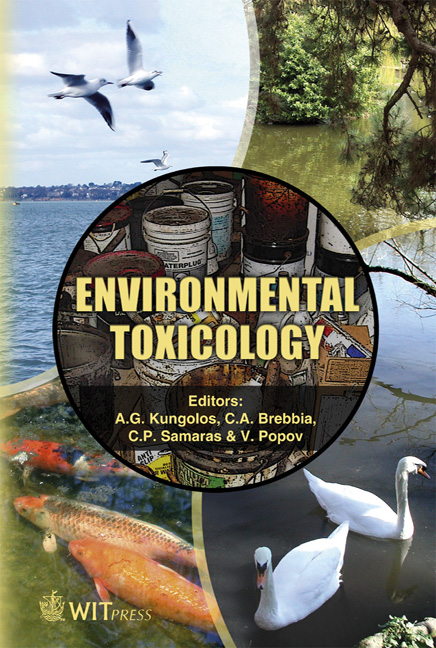The Presence And Effect Of Endocrine Disruptors On Reproductive Organs Of Fish In A Reservoir Used For Aquiculture
Price
Free (open access)
Transaction
Volume
10
Pages
5
Published
2006
Size
375 kb
Paper DOI
10.2495/ETOX060141
Copyright
WIT Press
Author(s)
L. S. Shore & M. Gophen
Abstract
A reservoir receiving some sewage water from an urban area, in addition to fresh water sources, was used for raising three species of fish. Prior to the introduction of the fish, the reservoir water contained appreciable amounts of testosterone, estrogen, ethinylestradiol and medroxyprogesterone. After introduction of the fish the level of hormones and drugs were reduced to nearly non-detectable levels while in a control reservoir without fish, the levels of the compounds remained constant. Of the three species studied, after eight months only the female carp developed gonads, which were small for body size. Observations suggest that the fish absorb the hormones and drugs in the early growing season and this has a negative effect on their reproductive development. Keywords: endocrine disrupters, ethinylestradiol, gonadal atrophy, carp, tilapia. 1 Introduction Household, industrial and agricultural (recycled effluents) water sources are liable to contain Endocrine Disrupting Agents (EDAs). The EDAs are a heterologous group which can influence the endocrine system of various organisms [5] and to cause endocrine disruption in the parent organism or its offspring. In particular, chemicals that bind to the receptor of the natural hormone can mimic or depress the actions of the natural ligand. These compounds have been demonstrated to affect wildlife and domestic animals but their effects in humans are not well documented [5, 8, 9]. In the last two decades, there has been an increased awareness of the effects of these compounds on animals and man and this has been reflected in scientific publications as well as
Keywords
endocrine disrupters, ethinylestradiol, gonadal atrophy, carp, tilapia.





